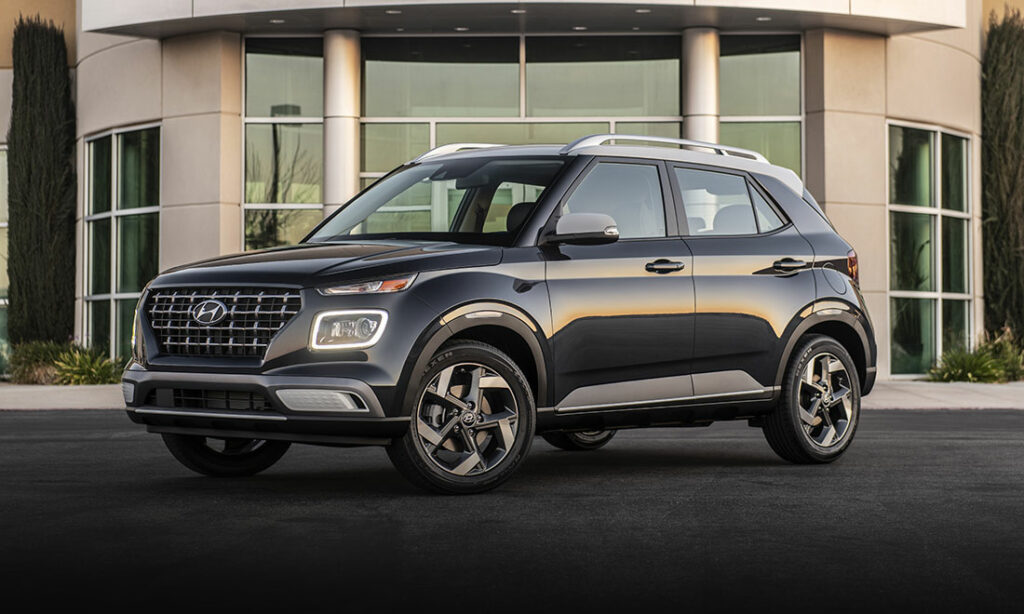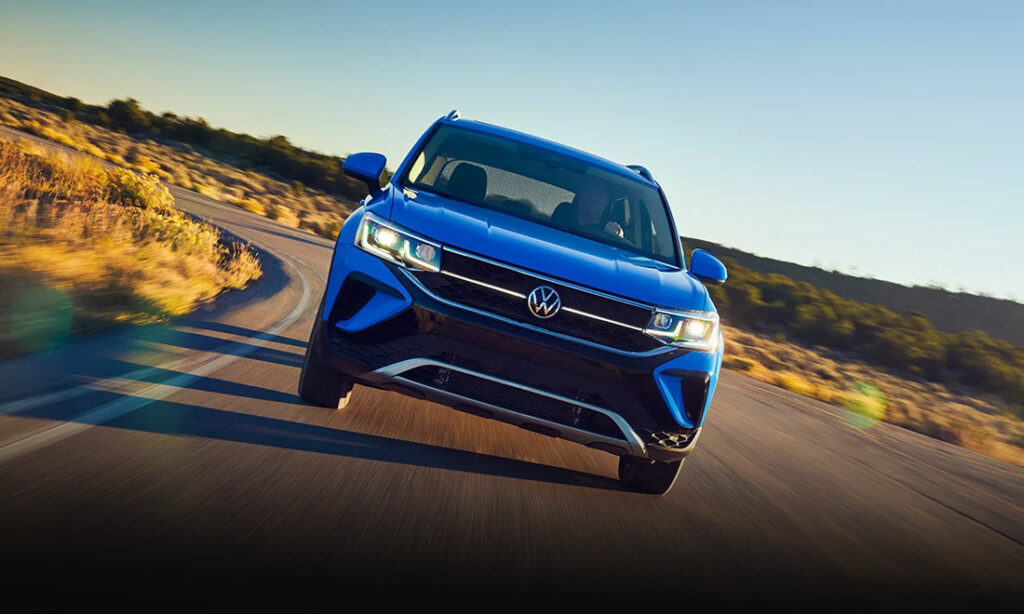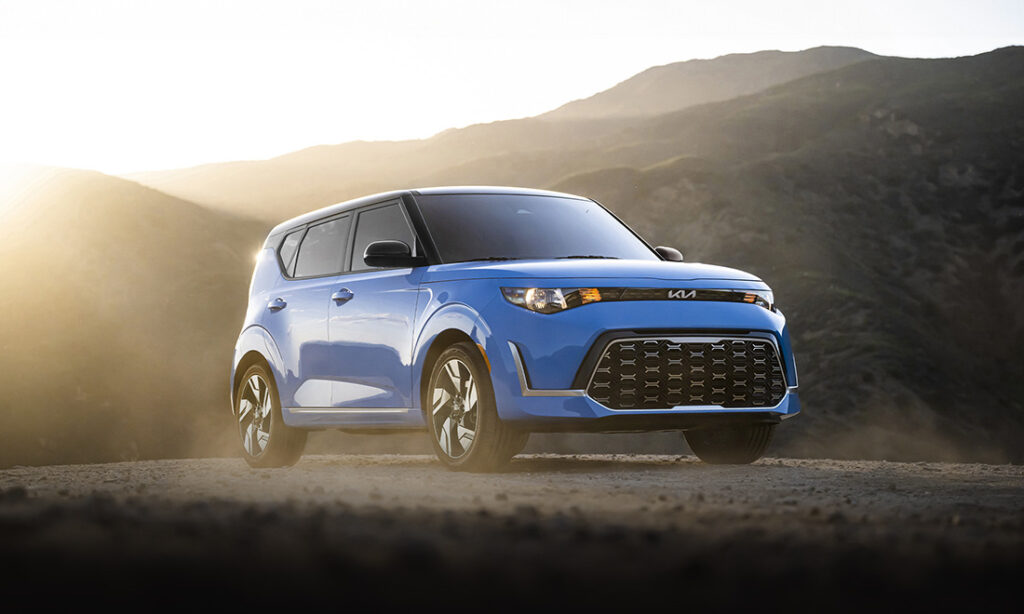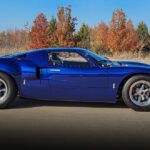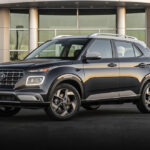Jaguar XJ Through the Years
From conception to the final model, join us in looking at the lengthy history of the impressive Jaguar XJ in our Through the Years feature!
51 Years, 5 Generations, and 9 Types of the Jaguar XJ
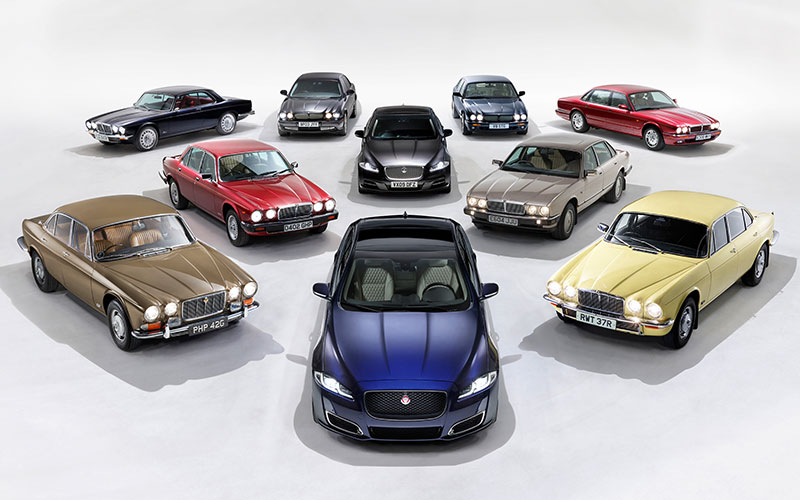
Jaguar XJ models – media.jaguar.com | Shop Jaguar XJ on Carsforsale.com
The ‘XJ’ part of the Jaguar XJ is a code name that stands for “eXperimental Jaguar.” This experiment ended up lasting several decades, hitting sales marks, and becoming a flagship for the Jaguar brand. Everyone from Frank Sinatra to Tom Petty to the royal family owned a Jaguar XJ. Iron Maiden drummer Nicko McBrain owns a custom-built Jaguar XJ6.
The Jaguar XJ is one of the most featured British vehicles in cinema and television history. You can catch glimpses of the XJ in hits like Miami Vice, The Wolf of Wall Street, and Knight Rider. It’s not just the Series I, Series II, and Series III models that earned status as celebrity favorites. Jay-Z featured the 2011 Jaguar XJ in one of his music videos.
Jaguar developed nine different XJ models over its 51-year run. The luxury sedan, or saloon as the British would say, received various updates during five generations of production. Some are still considered classics. Others didn’t quite hit the mark with Jag lovers. Take a look below at the hits, misses, and everything in between as we showcase the evolution of this look at Jaguar’s pinnacle saloon.
1st Generation Jaguar XJ (1968-1992)
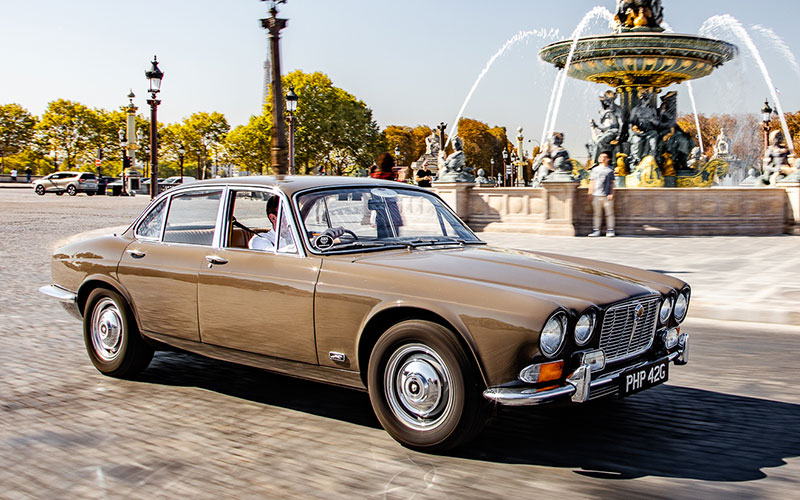
- The first Jaguar XJ was produced in 1968. It’s now known as the Series I, though that name wasn’t adopted until later.
- Jaguar wanted a four-seat GT to replace the E-type, so the XJ was born thanks to the founder of Jaguar, Sir William Lyons.
- The plan was for this new vehicle to be equipped with a V-12 engine, but the team wasn’t able to accomplish that, so they settled on a 4.2-liter inline-six engine instead. A 2.8-liter six-cylinder engine was used for the base model.
- The 1968 Jaguar XJ incorporates some design elements from the Mark II and 420 sedans, like the grille and the quad headlights. The grille has vertical and horizontal bars on it.
- Jaguar offered a long-wheelbase Series I XJ starting with the 1972 model. The 1972 XJ also had a V12 engine in it.
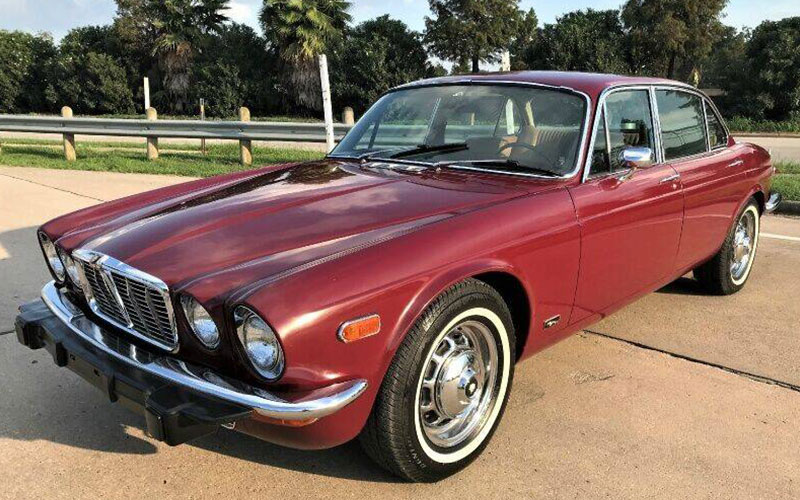
- Series II of the Jaguar XJ came in the version of the 1974 model, after the vehicle received a facelift. Styling was updated inside and out. This XJ had a 3.4-liter straight-six in it.
- Designers raised the front bumpers of the 1974 XJ to comply with U.S. safety standards. As a result, the grille was smaller than it was before.
- All Jaguar saloons transitioned into the long-wheelbase setup during the production of the Series II Jaguar XJ.
- A two-door XJ Coupe, or XJC, was also developed around the same time. It was available starting with the 1975 model year until the 1977 model.
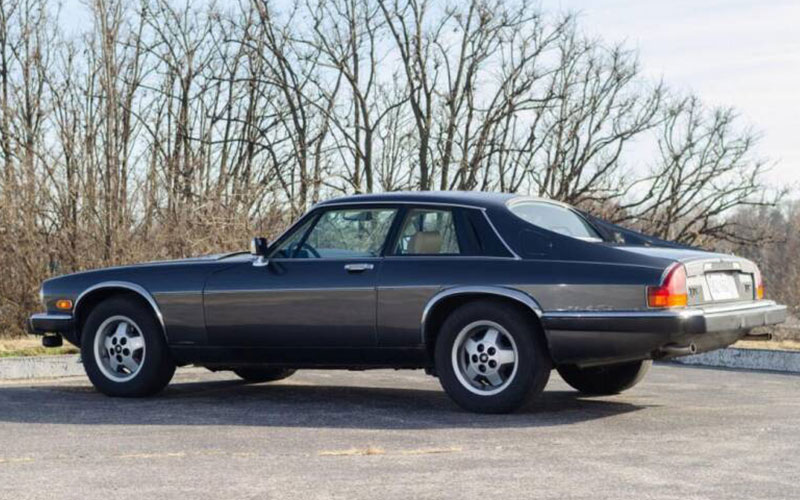
- Only 10,000 XJ Coupes were made, so this Jaguar is now a rare one.
- Series III arrived with the 1979 Jaguar XJ, after a significant facelift. Subtle changes were made to the roofline, door handles, and chrome trim. Italian design house Pininfarina handled duties for Series III.
- The grille became just vertical slats, and the bumpers became rubber starting with the 1979 XJ.
- The 1981 Jaguar XJ received new cylinder heads and a higher compression ratio, improving fuel economy.
- The 12-cylinder Series III cars were in production until 1992, but that didn’t stop Jaguar from overlapping and starting a new generation of the XJ while the Series III was still selling well. In total, 132,952 Series III cars were built.
2nd Generation Jaguar XJ (1986-1993)
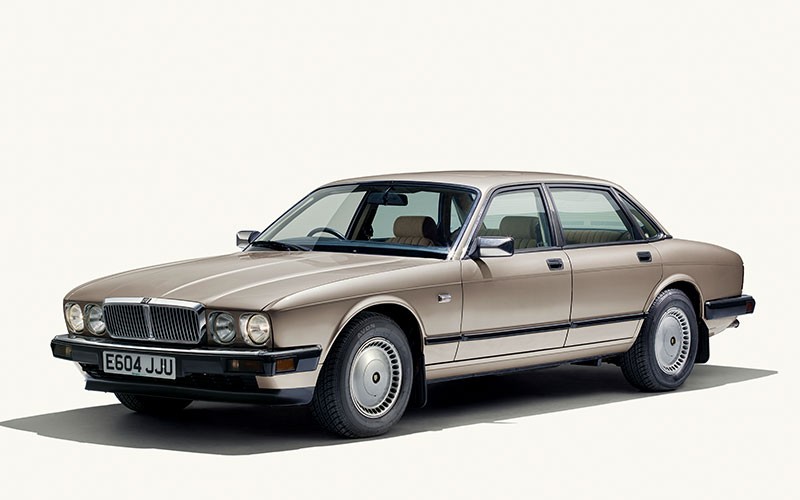
- The XJ40 was supposed to be a replacement for the XJ models. After years of development throughout the 1970s, the XJ40 was unveiled at the British International Motor Show in 1986.
- Jaguar dropped the ‘Series’ designation with this new generation.
- Pininfarina was going to design the XJ40, too, but development costs got too high, so Jaguar turned to their in-house design team instead.
- A new platform gave Jaguar a boxier look in the back and from the side.
- Also new was the six-cylinder engine, named the AJ6. The 3.6-liter engine paired with a four-speed automatic in the U.S. market.
- This version of the vehicle became so popular, Jaguar had to add a second assembly line in 1987.
- One complaint about the 1986 XJ40 was that it sat more like a sports car. There wasn’t much legroom or headroom in the rear for anyone who wasn’t a child.
- Jaguar was selling up to 39,000 XJ40’s a year by 1989. Ford took ownership of Jaguar the same year.
3rd Generation Jaguar XJ (1994-2002)
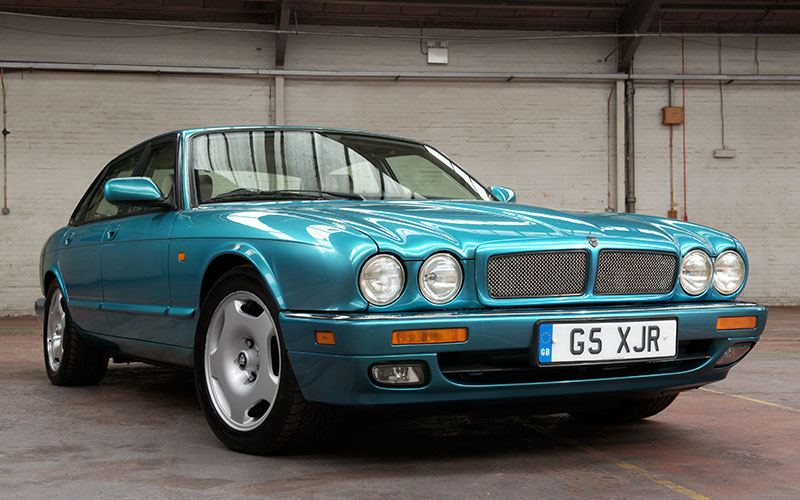
- The six-cylinder X300 arrived in October 1994 at the Paris Motor Show after Ford invested nearly $300 million into the project.
- It was based on the 1985 XJ40 platform, but had a number of cabin updates and engine offers, including the 12-cylinder version, known as the XJ12.
- The high-performance XJR was even more powerful than the others, putting out 322 horsepower. It was the first supercharged Jaguar ever offered.
- This XJ was a mix of British design and Ford oversight. Rounded features from previous iterations were brought back for the X300.
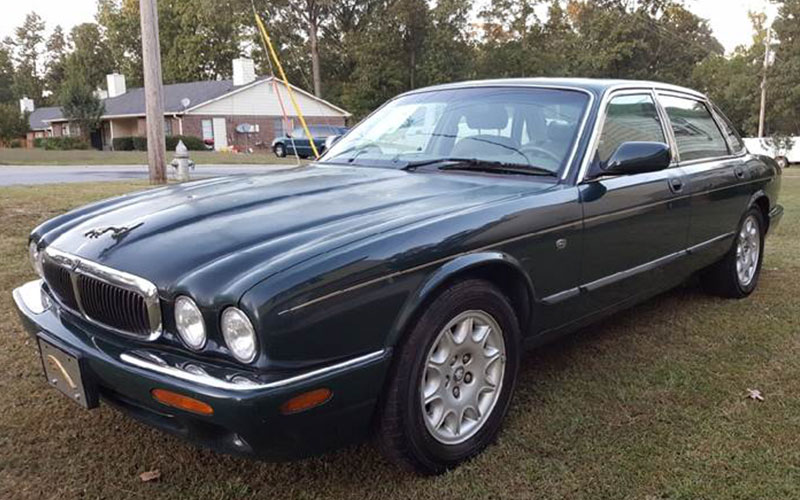
- Ford corrected the lack of legroom in the XJ40 with a more spacious, luxurious cabin in the X300.
- The X308, otherwise known as the XJ8, was introduced in 1997 with a manufacturer suggested retail price (MSRP) of $54,750. This vehicle featured a new 4.0-liter or supercharged 4.0-liter aluminum V8 engine.
- The 1998 XJ8 made 290 horsepower with a five-speed automatic transmission.
- After the debut of the 1998 XJ8, all other six-cylinder and 12-cylinder engines were dropped from the lineup.
4th Generation Jaguar XJ (2003-2009)
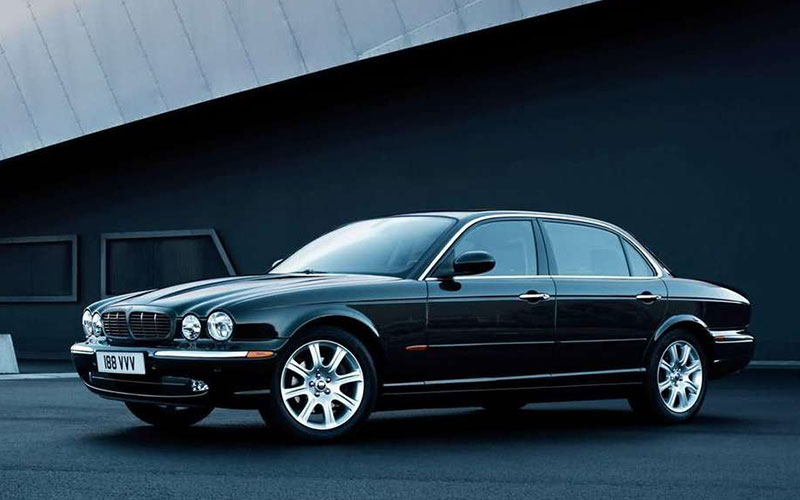
- The X350 kicked off the third generation of the XJ in 2003 with an all-new chassis.
- This 2004 XJ8 and XJR were made of lightweight aluminum. It was both stiffer and lighter than the old XJ thanks to a rivet bonding process during its construction.
- This XJ was light enough to offer a V6 or V8 engine.
- The X350 exterior had more rounded features, but not everyone was a fan of this heavier look.
- After a facelift in 2007, the X350 rolled off the production line. The front grille was redesigned in an effort to achieve a more modern look. The headlamps and bumper also had a few changes.
- Ford announced plans to sell Jaguar in 2007.
5th Generation Jaguar XJ (2011-2019)
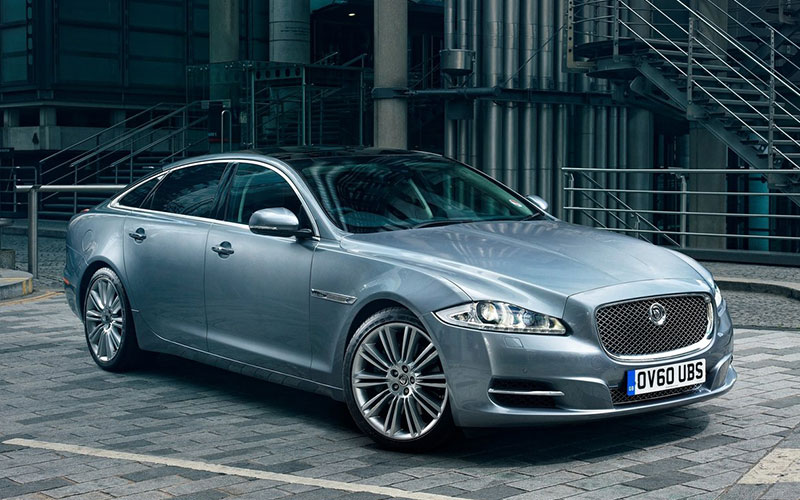
- Jay Leno and model Elle Macpherson were recruited to unveil the redesigned X351 in 2009. This was perhaps the most polarizing version of the XJ. It was available as a 2011 model.
- By this point, Ford sold Jaguar to Indian automaker Tata, which took the opportunity to shake things up with the XJ.
- British automobile designer Ian Callum eliminated many of the traditional XJ design elements, giving the 2011 Jaguar XJ slanted, single-piece headlights, Coupe-esque window styling, and a sleeker profile. Some liked this more modern approach, while others didn’t.
- This newly-designed XJ used the same rivet bonding process as the previous generation, so it was still considerably lighter than the competition in the segment. Jaguar claimed the XJ was 250 lbs lighter than the 2011 BMW 750Li.
- Inside this XJ was a rotary knob shifter and a liquid-crystal display screen, another departure from the previous styling. The more sloped roofline resulted in less head room in the back of the vehicle.
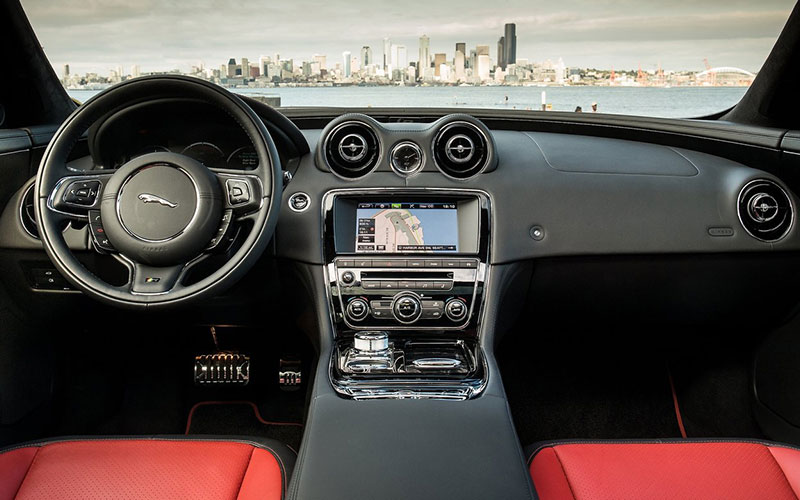
- The 2011 model offered the same 385-horsepower V6 and V8 engine options as before. Supersport models were equipped with a supercharged 510-horsepower V8.
- The XJ351 maintained a cultural status, used to transport the British royal family and former United Kingdom Prime Minister Theresa May.
- A four-cylinder supercharged 340-horsepower 3.0-liter V6 was added to the 2013 Jaguar XJ. All-wheel drive and an eight-speed transmission were also added to the 2013 lineup.
- The XJR trim was introduced for the 2014 Jaguar XJ. It had a 500-horsepower V8.
- 2015 XJ, 2016 XJ, and 2017 XJ models received either no or minor updates. For example, park assist and traffic sign recognition were available with 2016 Jaguar XJ models.
- In 2018, a special edition XJ50 was put out to celebrate 50 years of the XJ. It featured 20-inch wheels, a black grille, updated front and rear bumpers, and XJ50 badging.
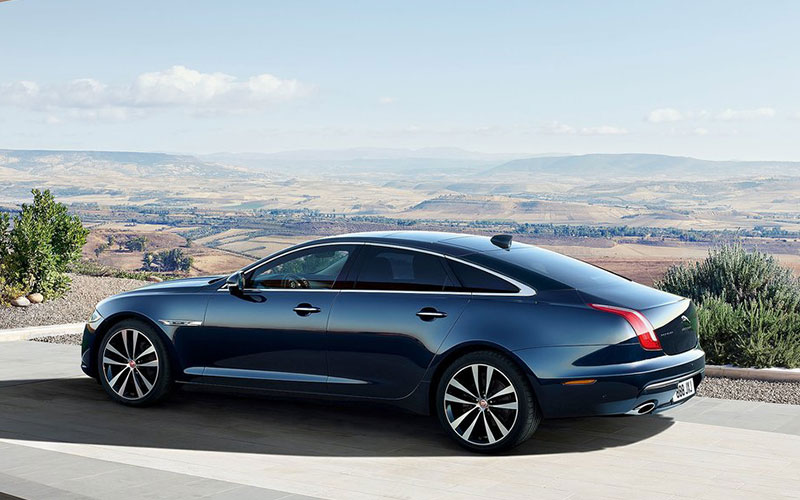
2019 Jaguar XJ50 – netcarshow.com | Shop Jaguar XJ on Carsforsale.com
- Inside the 2019 Jaguar XJ50 are diamond-quilted leather seats. Under the hood is a 3.0-liter V6 or 5.0-liter V8.
- 2019 XJ models came with available Android Auto, Apple CarPlay, automatic emergency braking and the same base and supercharged V6 and V8 engines.
- Plans for an all-electric XJ were announced in 2019. The vehicle was going to be launched in 2020, but those plans were shelved. Right now, there’s been no movement on that project.
- Even though Jaguar XJ sales were increasing in the past few years, Jaguar Land Rover said the XJ didn’t fit into their vision for Jaguar.
- There may not be any future plans for the Jaguar XJ, it certainly hasn’t been forgotten. There’s a long history of accolades and beloved designs behind it. Of course, there are plenty of used models from several decades to track down as well.


